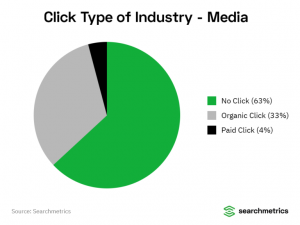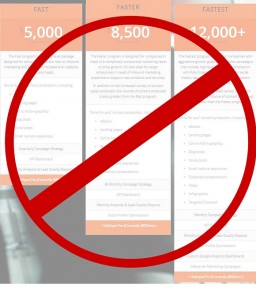— August 7, 2019

We leverage decades of experience to determine the most appropriate segmenting method to uncover the most effective solution that will benefit you and your customers.
Organizations spend considerable resources to define and execute the right business strategies to generate revenue and high returns on their investments. A crucial first step to sustaining growth is to identify customers who are most likely to support your product portfolio and engage them with the right marketing messages and communication modes.
Segmentation research is one of the most effective methods for identifying these important customers—yet many organizations are not using it.
This blog provides insight into the challenges of segmentation including common mistakes and best practices from design to analysis.
The Ins-and-Outs of Segmentation Research
All customers are important but not created equal and all certainly don’t represent the same opportunities for businesses. Early adopters, heavy users, and repeat buyers all represent desirable targets. They are often your organization’s brand evangelists who generate over-sized and recurring revenues.
These are critically important constituents. Finding, identifying and establishing products and engagement channels can be accomplished in a number of ways but segmentation may well be the most effective.
Segmenting, or identifying the customer characteristics and desired product benefits which establish cohesion among similar groups of customers and differentiate between disparate customer groups, is a preferable alternative.
Viewing customers in smaller subsets of groups such as these provides the opportunity to concentrate efforts more effectively in areas such as messaging, profitability, and customer relation management including:
- Customer optimization
- Margin enhancement
- Product development and line extensions
- Increased media selection accuracy and targeting
- On point creative and messaging
- Loyalty initiatives
- Improved customer experience
Successful segmentation efforts result in customer groupings that one can differentiate among based on their responses to demographic, attitudinal, and/or behavioral variables.
Effectiveness is measurable and can be determined by whether a segmentation solution results in customer segments that are:
- Attractive: Each segment has good revenue potential to warrant investment in product development and/or marketing efforts.
- Cohesive: Customers within each segment are homogeneous with each other
- Distinct: Each segment is substantially different than the others
- Actionable: Appropriate information is available for customers to be able to market directly to them, preferably in a variety of channels
The Most Common Challenges Companies Face When Doing Segmentation Research
Segmentation research often entails substantial investments of time, personnel and financial resources. A number of considerations should be accounted for in order to avoid a suboptimal result and to optimize the return on these invested assets.
- Client/End User Engagement: Understanding each stakeholder group’s objectives and how the results from the segmentation will be employed leads to a smoother process from initiation through completion.
- Hypothetical Segments: Conceptualizing expected segments is useful in effectively constructing survey questions, helping to determine if those segments actually exist.
- The Right Bases Mix: Identifying the right mix of bases variables used for segmenting that will identify hypothesized segments and meet stakeholders’ information needs.
- Typing Algorithm: Reliable algorithms typically result from using all of the segmentation criteria, however, most often these criteria exceed 50 survey questions. It is recommended that proposed segmentation solutions include a reliable, shorter algorithm that can be employed for dynamic typing situations.
- Linkage With Other Data: Segmentation is often criticized for having too narrow a focus. Segmentation usefulness can be enhanced with linkage to other studies and information databases that provide segment monitoring or more targeting detail.
Don’t Forget the 3 Most Important Segmentation Approaches
There is no single approach to segmentation. The best approach is based on available resources and corporate objectives. The most effective segmentation approaches are:
- Database: Employing existing customer records can provide actionable segments, particularly if the database contains a variety of customer-specific criteria including demographics, behavioral and preference information, beliefs, product or service perspectives, etc.
- Needs-based: This survey approach investigates customer needs sets and where product opportunities and gaps exist in the existing marketplace. Identifying the elements that underlie customer decisions enables customization that addresses utilization requirements.
- Attitudinal: Categorizing customers by their closely held attitudes enables products and messaging to resonate at deep, internal levels that address fundamental opinions and viewpoints. Surveying customers for those criteria that connect at a visceral level yields direction for design of products that have enduring significance.
Key Segmentation Stage Best Practices You Don’t Want to Miss
We have shared these and additional insights into this strategically vital technique during a recent webinar that is free to all. Complimenting theory with real-life examples of successes and pitfalls, this engaging webinar is perfect for novice and seasoned practitioners alike. Join strategic research professionals for this one-hour look into how customers which are so different are really so much alike.
In the webinar, you’ll learn more about:
- Common mistakes people make when doing segmentation studies
- Why implementing segmentation research is critical to your business strategy
- How segmentation research works
- Three different segmentation approaches: database, needs-based, attitudinal
- Best practices at key segmentation stages
Click here to watch the webinar now.
Business & Finance Articles on Business 2 Community
(27)
Report Post





